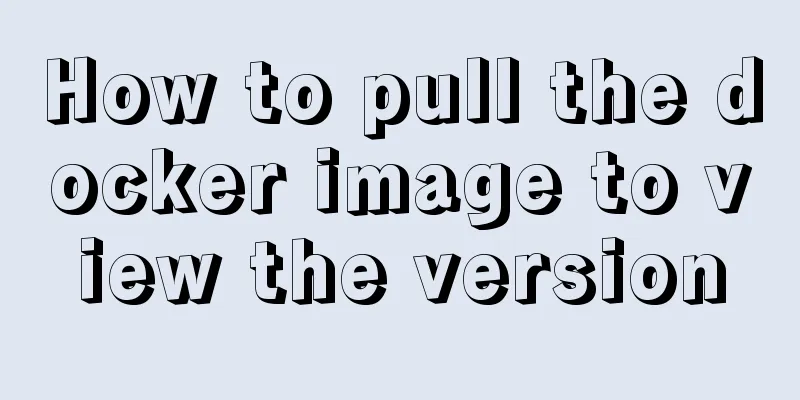Using js to implement the two-way binding function of data in Vue2.0

Object.defineProperty Understandinggrammar:
obj and prop are easy to understand. For example, we define a variable as
const o = {
name:'xbhog'
}
Among them, obj refers to o, and prop refers to o.name. Next, let's take a look at the descriptor.
Note: The value attribute, writable attribute and get attribute, set attribute in the descriptor are mutually exclusive. Only one can exist. Knowing the prerequisites, let's implement two-way binding of v-model in VueLet's look at the implementation code first:
<!DOCTYPE html>
<html lang="en">
<head>
<meta charset="UTF-8">
<title>Realize two-way data binding through js</title>
</head>
<body>
<input type="text"/><br>
<h1>Hello: <span>Update data</span></h1>
<!-- Realize two-way data binding through js -->
<script>
// The method returns the first HTMLElement object in the document that matches the specified selector or selector group var ipt = document.querySelector('input');
var p = document.querySelector('span');
var data = {name:""};
/*
The oninput event is triggered when the user types something.
This event is triggered when the value of an <input> or <textarea> element changes.
*/
ipt.oninput = function(){
// Pass the value in ipt.value to the value of data.name
data.name = ipt.value;
}
//Hijack ipt.value
Object.defineProperty(data,"name",{
//Data subscription get(){
return ipt.value; //The get method will be called when accessing},
//Data hijacking //name:value
set(value) {
p.innerHTML = value;
ipt.value = value;
}
})
</script>
</body>
</html>First, we use document.querySelector to get the Html objects of the input and span tags, and then define a data object with the attribute name empty. Use the oninput event listener to monitor user input (this event is triggered when the value of an <input> or <textarea> element changes). Pass the value in ipt.value to the value of data.name; data.name = ipt.value; Use Object.defineProperty to hijack user input data.
Object.defineProperty(data,"name",{
//Data subscription get(){
return ipt.value; //When accessing data.name, the get method will be called to call ipt.value to get the current value},
// Data hijacking set(value) { // The set method will be automatically called when setting data p.innerHTML = value;
ipt.value = value;
}
The effect is more obvious: Set method:
Get method:
The final effect:
References:
SummarizeThis is the end of this article about using js to implement the two-way data binding function in Vue2.0. For more relevant content about using js to implement Vue2 two-way binding, please search for previous articles on 123WORDPRESS.COM or continue to browse the following related articles. I hope everyone will support 123WORDPRESS.COM in the future! You may also be interested in:
|
<<: The MySql 8.0.16 version installation prompts that "UTF8B4" is used instead of "UTF8B3"
>>: Implementation of debugging code through nginx reverse proxy
Recommend
Native js implements custom scroll bar component
This article example shares the specific code of ...
How to change the root password in a container using Docker
1. Use the following command to set the ssh passw...
How to implement mask layer in HTML How to use mask layer in HTML
Using mask layers in web pages can prevent repeat...
Example of how to quickly build a LEMP environment with Docker
LEMP (Linux + Nginx + MySQL + PHP) is basically a...
Implementing file content deduplication and intersection and difference in Linux
1. Data Deduplication In daily work, there may be...
js implements clock component based on canvas
Canvas has always been an indispensable tag eleme...
Command to view binlog file creation time in Linux
Table of contents background analyze method backg...
Solution to the problem of slow docker pull image speed
Currently, Docker has an official mirror for Chin...
Summary of Problems in Installation and Usage of MySQL 5.7.19 Winx64 ZIP Archive
Today I learned to install MySQL, and some proble...
Detailed explanation of MySQL sql_mode query and setting
1. Execute SQL to view select @@session.sql_mode;...
Troubleshooting MySQL high CPU load issues
High CPU load caused by MySQL This afternoon, I d...
WeChat applet to obtain mobile phone number step record
Preface Recently, I encountered such a problem wh...
A brief introduction to the differences between HTML and XHTML, and HTML4 and HTML5 tags
Difference between HTML and XHTML 1. XHTML elemen...
Jenkins packaging microservices to build Docker images and run them
Table of contents Environment Preparation start 1...
MySQL 8.0.18 installation and configuration method graphic tutorial (linux)
This article records the installation and configu...












